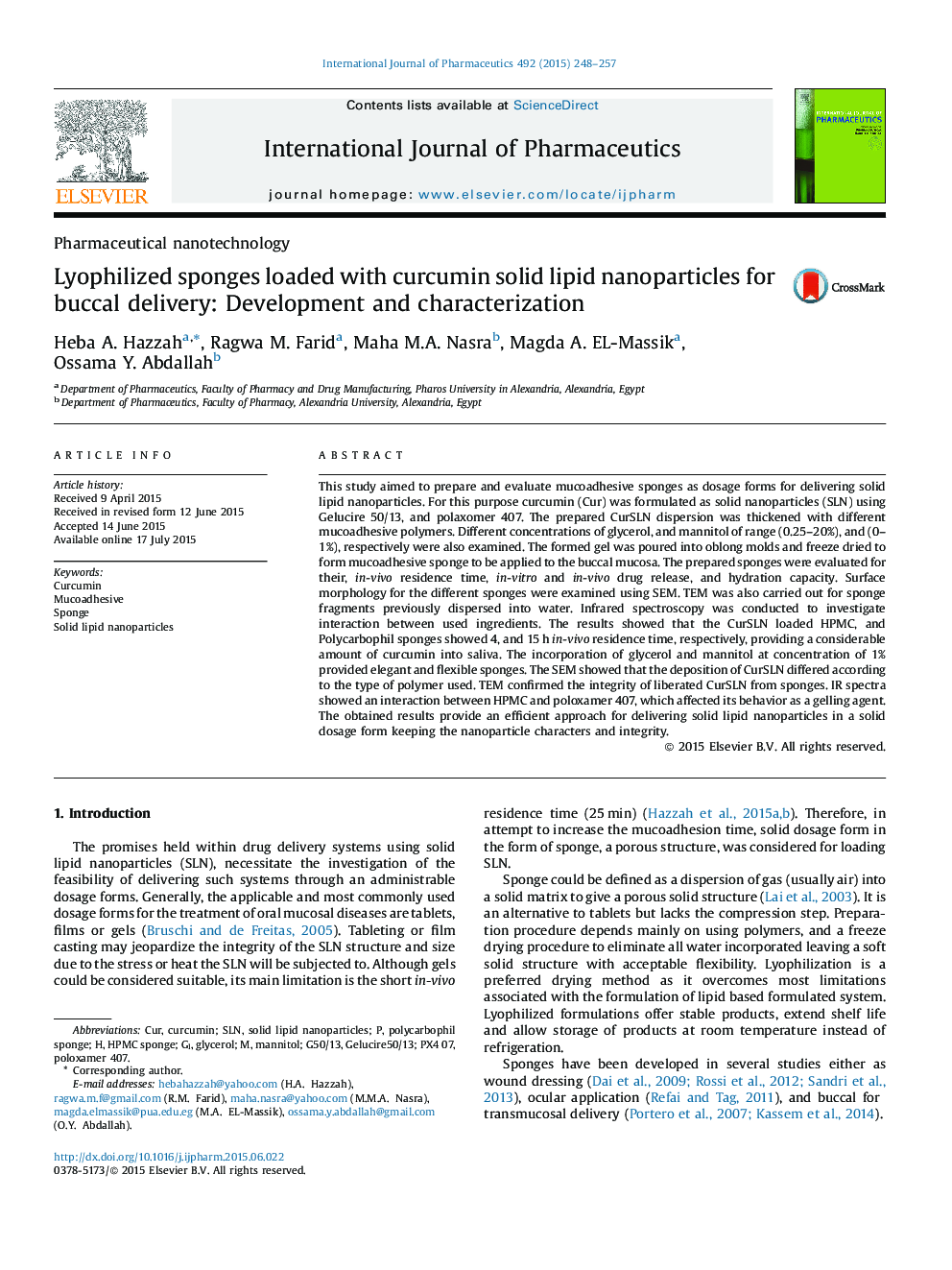| کد مقاله | کد نشریه | سال انتشار | مقاله انگلیسی | نسخه تمام متن |
|---|---|---|---|---|
| 5818592 | 1557332 | 2015 | 10 صفحه PDF | دانلود رایگان |
This study aimed to prepare and evaluate mucoadhesive sponges as dosage forms for delivering solid lipid nanoparticles. For this purpose curcumin (Cur) was formulated as solid nanoparticles (SLN) using Gelucire 50/13, and polaxomer 407. The prepared CurSLN dispersion was thickened with different mucoadhesive polymers. Different concentrations of glycerol, and mannitol of range (0.25-20%), and (0-1%), respectively were also examined. The formed gel was poured into oblong molds and freeze dried to form mucoadhesive sponge to be applied to the buccal mucosa. The prepared sponges were evaluated for their, in-vivo residence time, in-vitro and in-vivo drug release, and hydration capacity. Surface morphology for the different sponges were examined using SEM. TEM was also carried out for sponge fragments previously dispersed into water. Infrared spectroscopy was conducted to investigate interaction between used ingredients. The results showed that the CurSLN loaded HPMC, and Polycarbophil sponges showed 4, and 15Â h in-vivo residence time, respectively, providing a considerable amount of curcumin into saliva. The incorporation of glycerol and mannitol at concentration of 1% provided elegant and flexible sponges. The SEM showed that the deposition of CurSLN differed according to the type of polymer used. TEM confirmed the integrity of liberated CurSLN from sponges. IR spectra showed an interaction between HPMC and poloxamer 407, which affected its behavior as a gelling agent. The obtained results provide an efficient approach for delivering solid lipid nanoparticles in a solid dosage form keeping the nanoparticle characters and integrity.
140
Journal: International Journal of Pharmaceutics - Volume 492, Issues 1â2, 15 August 2015, Pages 248-257
